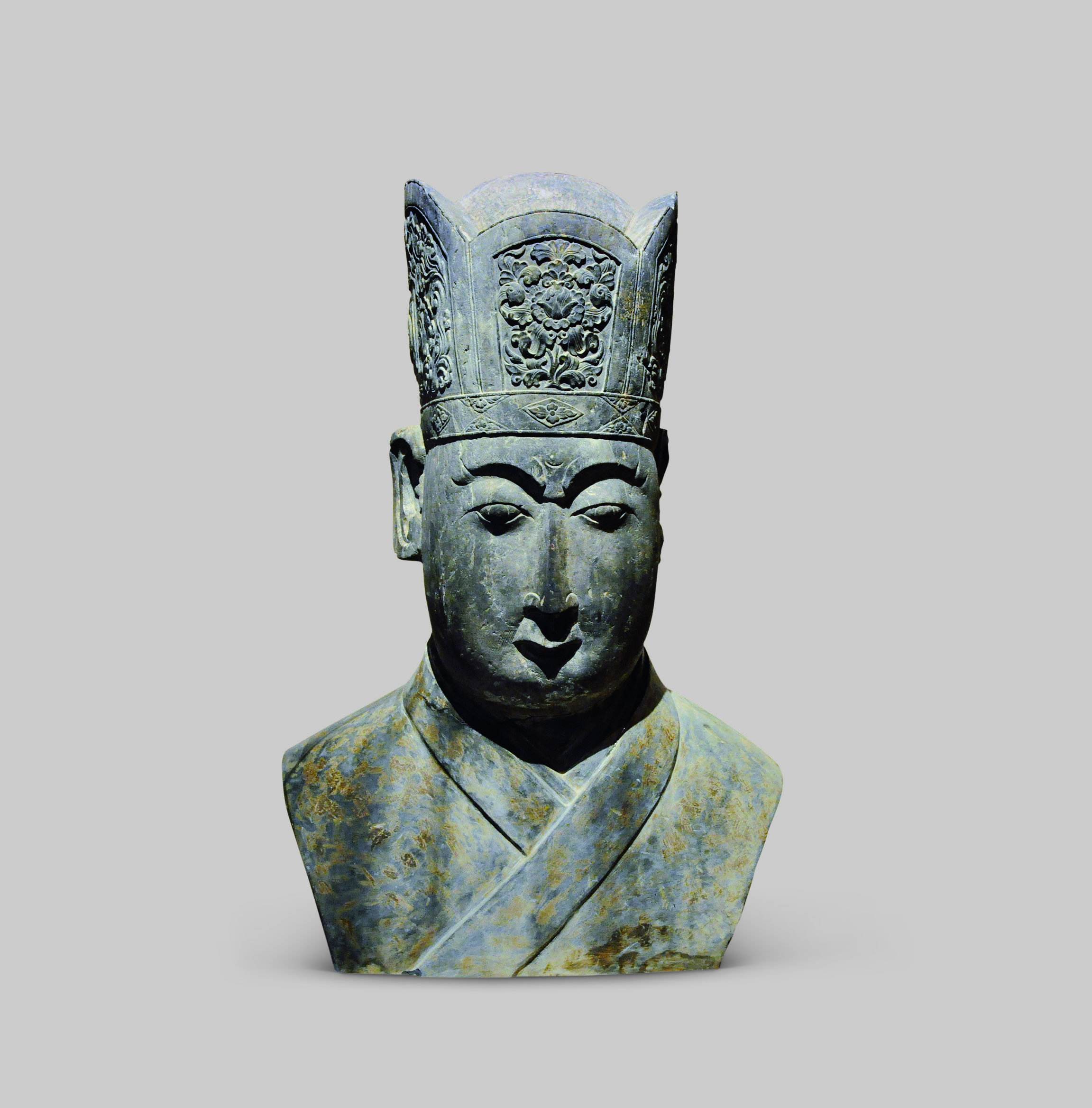Date: Northern Song Dynasty (960-1127)
Provenance: Unearthed from the tomb of Prince Zhou of the Northern Song Dynasty, Gongyi, Henan province, 2009
Measurements: Height: 67cm, Width: 32cm
This stone bust was unearthed from the tomb of Prince of the Zhou of the Northern Song Dynasty, serving as an attendant in the Yongxi Mausoleum of Emperor Taizong (r. 976-997). According to the unearthed tomb tablet, the Prince of the Zhou was Zhao Xuanyou, the second son of Emperor Zhenzong (r. 997-1022).
The stone carving technique and style closely resemble those of the Yongxi Mausoleum. This artwork precisely delineates facial contours, including the forehead, eyebrows, cheekbones, lower jaw, and nasal bridge. The lifelike depiction of facial features, especially the application of lines and the intaglio carving method that showcases the pupils and enhances the eyes, captures the round-faced, gentle and refined countenance of a young gentleman.
Although the portion of the stone figure below the neck is incomplete, the carved hat symbolizes the individual's status. The ridges on top of the hat denote the rank of the person.
Judging from the facial expression and the hat of this stone figure, it closely resembles the images of civil officials in the Yongxi Mausoleum of Emperor Taizong and the Yongding Mausoleum of Emperor Zhenzong. Based on the structure of Song tombs, it is likely that the tomb of the Prince of the Zhou was also equipped with a sacred way and stone figures, albeit on a slightly smaller scale. Therefore, this stone sculpture might have originally stood on the sacred way of Prince Zhou's tomb, representing a civil official.
The construction of imperial tombs in the Northern Song Dynasty followed a standardized format, all facing north. Notably, the sacred way in front of the tomb featured a consistent arrangement of stone figures and animals on both sides, closely resembling ceremonial processions of the imperial court. These stone figures showcase exceptional carving techniques, predominantly employing various carving techniques, achieving a harmonious balance between form and spirit. They exemplify the distinctive characteristics of stone carving art during the Northern Song Dynasty.

